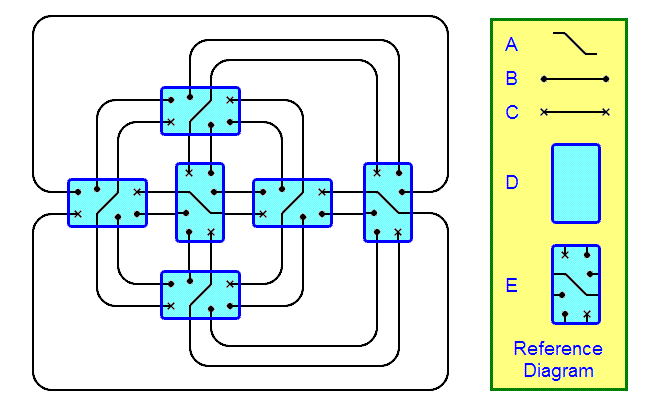PATTERN FOR ELEMENT CORE ELECTRONIC CONNECTIONS
The sub-modular entities in a basic level modular element need to be able to electronically connect to each other through their core bases, to transfer power or communicate with each other. In a full basic level modular element each entity can electronically connect directly to every other entity, except for the one on the opposite side, since they are adjacent to each other.
One way to make it possible for entities that are on opposite sides of each other to electronically connect is to provide a relay path through some of the adjacent entities; a relay channel needs to be present in every entity to accomplish this. Since the entities are uniformly manufactured, the relay paths can also be present in a uniform pattern.
There is a simple way to implement this solution; the figure below is a schematic diagram showing how the entities can electronically connect to both the adjacent and opposite side entities. The yellow box contains entity core base components labeled A, B, C, D, and E. Component A is the symbol for an electronic relay path through an entity for connecting two entities that are opposite from each other. Component B is an electronic connection between two entities; the clubbed ends indicate the entities they electronically connect by being encased in the symbol for an entity, component D. Component C is similar to component B, except the ends are X-shaped and it emphasizes that it is a relayed path for electronically connecting entities that are opposite from each other. The path symbolized in component B is only an electronic connection, not a representation of the path through space (i.e., it is not a mechanical schematic). Component E is the symbolic pattern of the uniformity of each entity (they are also symmetric in 180 degree rotations); each entity in the schematic diagram has an identical pattern to it, if rotated by 90 degrees when necessary.
Adjacent entities have one electronic connection, but entities that are at opposite sides of each other have two electronic connections; this is necessary since some element modules night not be full modules (meaning one of those paths is not present because the entity that has it is not present).
